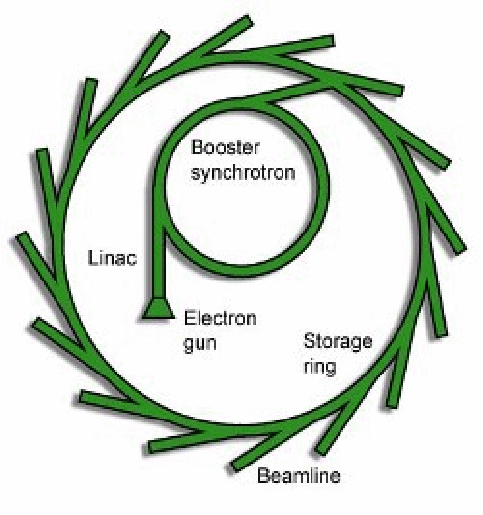The synchrotron is a type of particle accelerator that allows very high energies to be reached. Electrons are first generated in an electron gun, very like the cathode ray tubes found in old tv sets. They are then accelerated up to very high speeds through a series of particle accelerators. These are called the linear accelerator, or linac, the booster synchrotron and the large storage ring. The particle beam is bent to follow the ring by a series of electromagnets placed around the ring. As the particles speed up, the magnetic field is increased so that the radius of the path of the particles is kept constant. Energies of 10^{12} eV or more are attainable.
The storage ring is not a true circle, but a polygon, made of straight sections angled together with bending magnets. These bending magnets (also called dipole magnets) are used to steer the electrons around the ring. As the electron passes through each magnet it loses energy in the form of electromagnetic radiation. This light can then be channelled out of the storage ring wall and into the experimental stations, called beamlines.

>Third generation synchrotrons also use special arrays of magnets called insertion devices which placed in the straight sections of the ring. These cause the electrons to follow a wiggling path, which produces more intense and tuneable light
